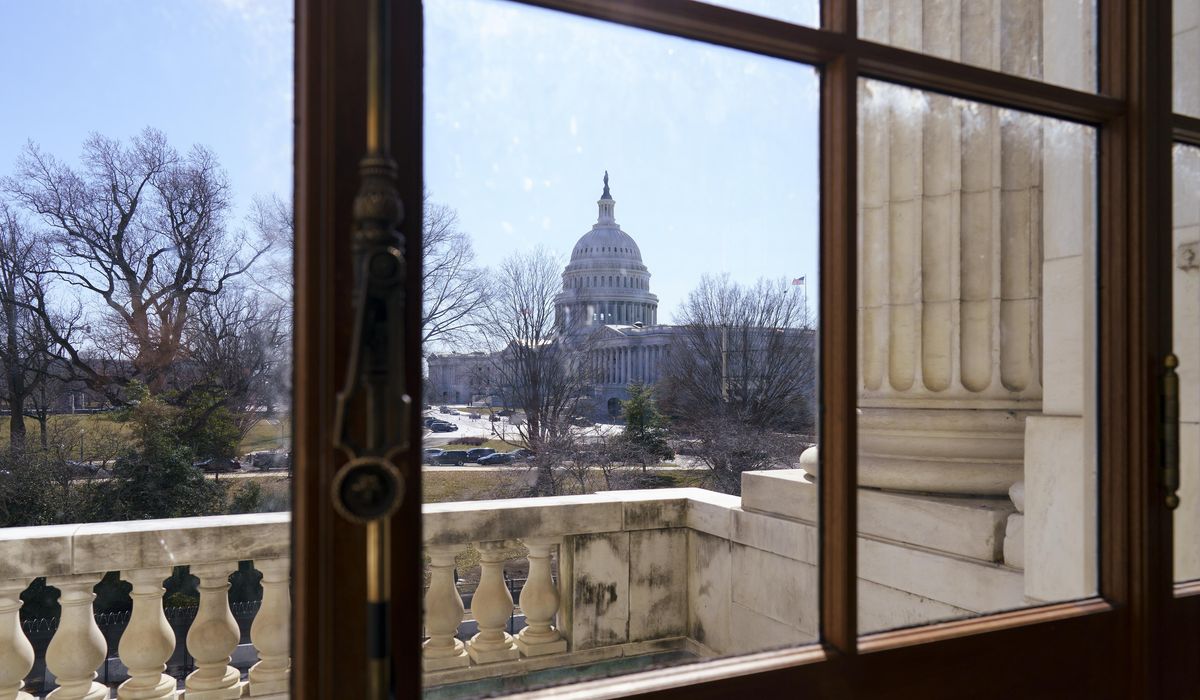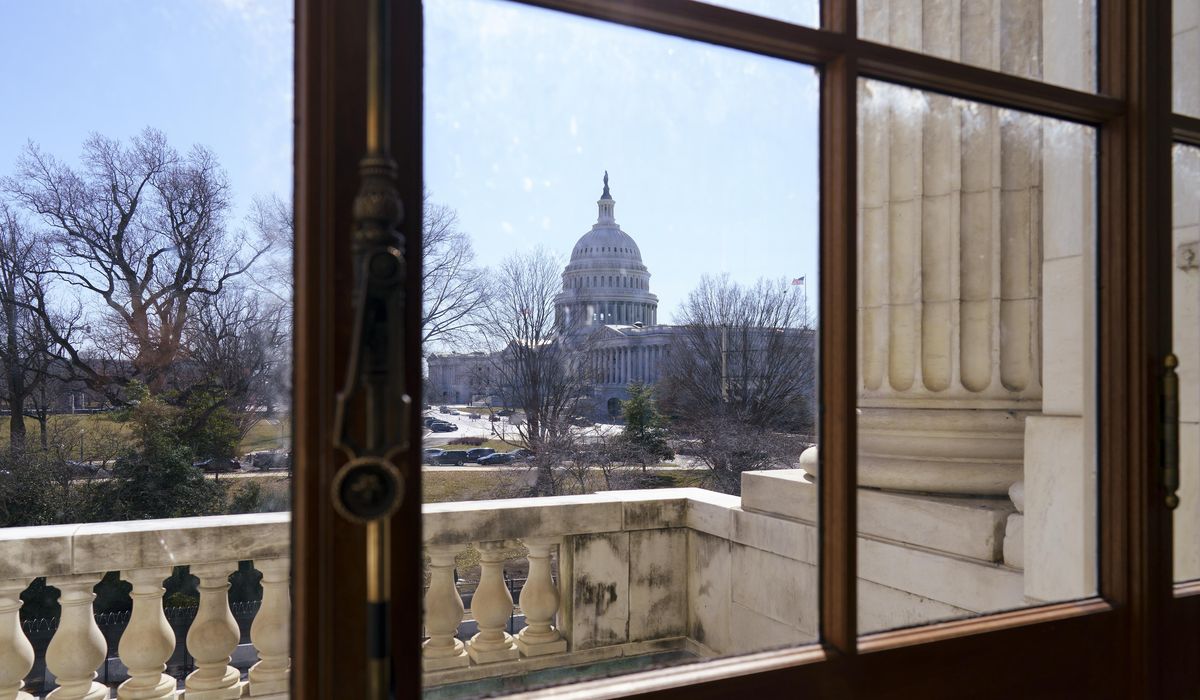
Richard B. Russell used to be known as a “senator’s senator” — a guy who knew the rules and the personalities, and made the chamber work.
But the Georgia Democrat, who died in 1971, now is better known as segregation’s senator, perhaps the most formidable champion of using the filibuster to block civil rights legislation for decades.
Which makes it all the more striking that while Robert E. Lee’s statue has been pulled down from the U.S. Capitol and lawmakers voted to expunge Confederate generals’ names from military bases, the Senate still honors Russell with his name on its most prestigious office building.
It’s not that folks haven’t tried.
Critics wrote columns and letters in an effort to erase the name. Some senators, including Majority Leader Charles E. Schumer, want to erase it, too. Mr. Schumer in 2018 and again in 2019 vowed to introduce legislation to rename the building after Sen. John McCain.
As majority leader for the last year, Mr. Schumer has had the power to force a vote on the issue. Yet according to legislative records, he’s never actually introduced the resolution, much less tried to bring it to the floor.
Mr. Schumer’s office didn’t respond to messages seeking comment, but Matt Bennett, who’s advocated for expunging the Russell name, gave Mr. Schumer a pass.
He said the New York senator has had a lot of other things on his plate with keeping the government open, advancing President Biden’s agenda and averting a debt-ceiling disaster.
“There’s also a real question about whether the Republicans in the Senate would go for a name change now,” said Mr. Bennett, now executive vice president at Third Way, a progressive think tank. “John McCain‘s style of politics is very much out of vogue, and undisputed Republican leader, Donald Trump, loathed him.
“I’d guess that Schumer and most Senate Democrats would happily vote to remove the name of a racist and replace it with that of an American hero, but I honestly don’t think most Senate Republicans would want to take that vote and risk the wrath of their master in Mar-a-Lago,” Mr. Bennett said.
If the Senate were starting over with an unnamed building now, it’s hard to imagine Russell would be the choice. Yet that’s true of so many monuments, which are relics of a certain time, and remain long after the subject is lost to history.
The Black Lives Matter movement and the post-George Floyd reexamination of public monuments has changed all that, forcing through a framework of race a reexamination of long-forgotten honor.
The building that bears Russell’s name opened in 1909, as the first set of Senate offices outside of the Capitol. Over the years it has played host to momentous events, including hearings on Watergate, the Iran-Contra affair, and the sinking of the Titanic.
In the 1950s, a second building was added. It became known as the New Senate Office Building, while the original went by Old Senate Office Building, or Old SOB.
In 1972, senators got around to affixing the names, and the recently deceased Russell and Sen. Everett Dirksen, a Republican who died in 1969, got the honors.
When a third building was completed and named in 1976, the honor went to Sen. Philip Hart — ironically, the only senator to vote against the 1972 names.
“I thought we had learned it was unwise to anticipate history’s verdict,” Hart said at the time of the Russell vote.
Walter Shapiro, a longtime journalist who lectures on political science at Yale University, said Hart’s admonition has proved prophetic.
In 1972, Russell was still lionized for his Senate mastership and his leadership of the Senate Armed Services Committee during the Cold War.
“If you said ‘Richard Russell,’ leading the segregationist filibusters would probably be the fourth or fifth thing that came to mind, not the first,” Mr. Shapiro said.
One reason that changed was the masterful work of historian Robert Caro, whose chronicles of Lyndon Johnson’s time in the Senate, published two decades ago, showed new light on Russell’s role in resisting civil rights.
“For Russell, holding the line in the United States Senate about civil rights was the be-all and the end-all of his service in the Senate,” said Mr. Shapiro, who also is a staff writer at The New Republic and a columnist for Roll Call.
He said there are plenty of other names to pick, including McCain or Sen. Robert Dole, who died earlier this month. But Mr. Shapiro’s original suggestion still has a certain power to it: Margaret Chase Smith, a Republican and one-time presidential candidate.
“She was the first consequential woman senator in American history. Her freedom of conscience address against Joe McCarthy, when many in the Republican Party, and many Democrats — including one John Kennedy — were exceedingly quiet, is still a major event,” Mr. Shapiro said.
“I hope there would be a moment where one pauses and realizes that there are just historical figures who really should be lionized on Capitol Hill,” he said.
‘Long arc’
In 2018, when Mr. Schumer first proposed changing names from Russell to McCain, there was a big hurdle: Georgia’s two Republican senators were not on board.
Now, the state is represented by two Democrats. But they demurred when asked whether they supported deleting the Russell name.
“I’d have to give that a bit more thought,” Sen. Jon Ossoff told The Times.
Sen. Raphael Warnock, a Black former pastor at Atlanta’s Ebenezer Baptist Church, where Martin Luther King Jr. was co-pastor at the time of his assassination, also was reluctant to jump on board.
“I think the fact that I have an office in the Russell building speaks to the long arc of our country, and we should have some conversations about that,” he said.
Mr. Ossoff, like Mr. Warnock, has his offices in the building.
But Rep. Al Green, Texas Democrat, said the time has come for senators to make the change.
“This federal building should not be named after a man who actively fought to advance the legacy of bigotry and invidious discrimination in this country. It pains me greatly that we have not been able to remove his name,” he told The Times in a statement.
In the last Congress, Mr. Green authored a resolution calling on the Senate to drop the Russell name and revert to the Old Senate Office Building until a new honoree can be agreed upon. He told The Times he’ll introduce a different version of that legislation next month.
“I am not sure why the Senate has not introduced a resolution addressing this yet, but I hope to see the Russell Office Building renamed this Congress,” Mr. Green said.
Byrd Rooms
Russell isn’t the only senator whose name is problematic in a post-Floyd world.
Joining Russell in filibustering civil rights legislation was Sen. Robert C. Byrd, a Democrat who in the 1940s had founded a chapter of the Ku Klux Klan in West Virginia. Byrd would go on to become Democrats’ floor leader in the 1980s, serve as president pro tempore of the Senate when Democrats held the majority, and be lauded as the Senate’s definitive historian.
Byrd’s name is still attached to dozens of public works projects in West Virginia — but more striking is that it also still adorns the Capitol offices of Mr. Schumer.
Thanks to a 1989 resolution, the suite of offices occupied by the Democratic Party’s Senate leader is known as the “Robert C. Byrd Rooms.”
Byrd has escaped most attention even as the Black Lives Matter era rips down other monuments and memorials.
But other Senate legends are sparking debate, including the late Sen. John C. Stennis, a Mississippi segregationist whose name adorns a Navy aircraft carrier and a NASA space facility.
Asked about the Byrd Rooms, Mr. Shapiro said each case is different. He said his “general feeling is to cut people a break about the worst decisions of their lives,” and that might apply to Byrd.
But Russell was different, Mr. Shapiro explained, because his Senate career was so heavily focused on using his power to defend segregation.
Meanwhile, McCain, who despite a relatively conservative record is now more often cited by Democrats than Republicans on Capitol Hill, still awaits honors promised in the wake of his 2018 death.
A number of ideas were suggested at the time.
In addition to Mr. Schumer’s unfulfilled promises about the Russell building, other senators proposed renaming NATO headquarters after the 2008 Republican presidential nominee or establishing a “John S McCain III Human Rights Commission” within the Senate.
Sen. Mitch McConnell of Kentucky, the chamber’s top Republican, said at the time a committee should be formed to sort through options and figure out the proper honor.
It’s unclear what became of the committee, and Mr. McConnell’s office didn’t respond to a request for comment.
McCain does have a Navy guided-missile destroyer named after him and his father and grandfather, both of whom were Navy admirals.








